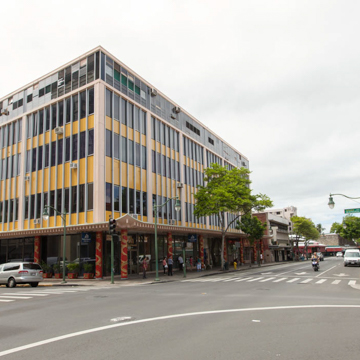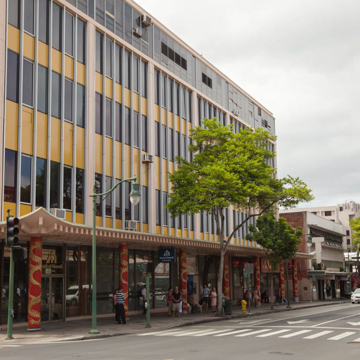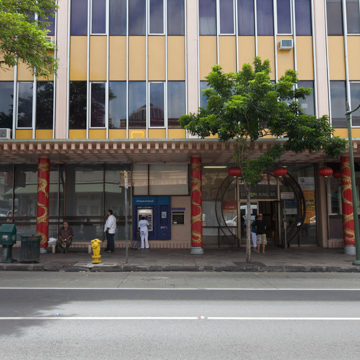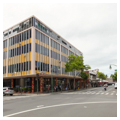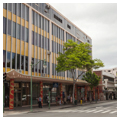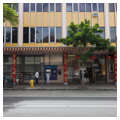One of the last overtly Chinese-style buildings erected in Chinatown was also one of the earliest structural steel curtain wall buildings in Hawaii. The complex boldly asserts a 1950–1960s-vintage expression of Chinatown's character, with its golden dragon-entwined red columns, flared concrete canopy, wrought-iron moon gate entrance, and terrazzo, phoenix mosaic in the lobby. The four upper stories rise in a modern Miesian manner, their paneled facades articulated by the vertical progression of the outset metal frames. Initially, the distinctive dragon columns fabricated by Mario Valdastri from white marble chips complemented the modern appearance of the upper stories, being completely white; only later were they coated to present today's less subtle appearance. When this distinctive building was constructed, the newspapers claimed C. Q. Yee Hop was one of the largest Chinese family-operated businesses in the world. It was started in 1887 by immigrant Quon Yee Hop Chun.
Honolulu-based architect Peter Hsi was born in mainland China and came to the United States in 1948 to attend Rensselaer Polytechnic Institute in Troy, New York. He graduated with a degree in structural engineering, attended graduate school at the University of Michigan, and then worked in Detroit for a number of years before moving to Honolulu in 1960. He designed numerous commercial and high-rise buildings in Honolulu, including the Gold Bond Building (1966; 677 Ala Moana Boulevard), the Alexander Arms condominium apartments (1970; 1320 Alexander Street), and Magellan Apartments (1969; 410 Magellan Street); he also designed the Hawaii National Bank in Hawaii Kai (1970; 266 Lunalilo Road) and several high-rise buildings in Guam.


